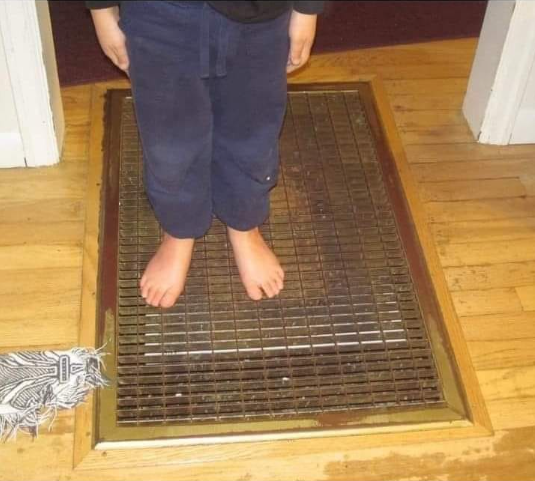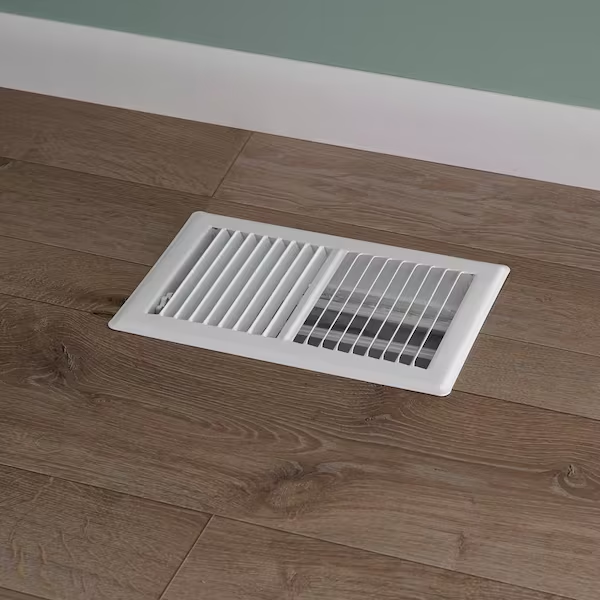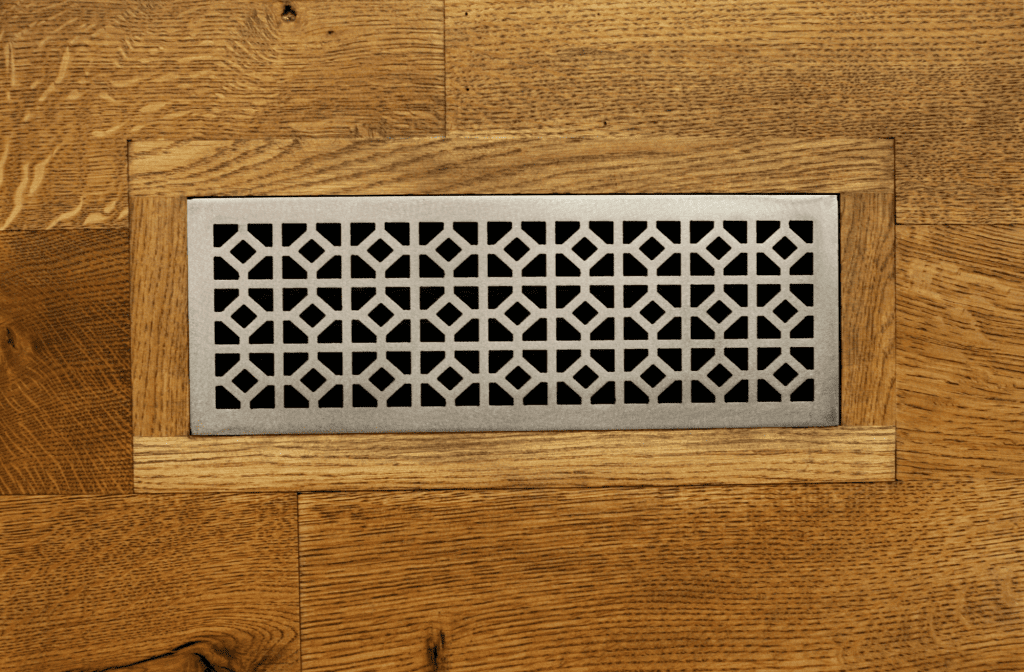Floor registers are a small but critical part of any heating, ventilation, and air conditioning (HVAC) system. While they often go unnoticed, these sturdy fixtures play a crucial role in maintaining an optimal indoor environment by distributing heated or cooled air efficiently throughout a room. For many people, floor registers evoke nostalgic memories of childhood winters, standing over the warm, comforting airflow. Yet beyond their sentimental value, these components are indispensable for a well-functioning HVAC system. In this article, we’ll explore the importance of floor registers, their proper placement, their role in HVAC efficiency, and tips for maintaining them.
1. What is a Floor Register? An Integral Part of HVAC Systems

A floor register is more than just a vent; it’s a grille equipped with a damper to control the airflow within an HVAC system. Unlike simple grilles, which merely allow air to pass through, registers come with movable parts, enabling you to adjust the amount of air entering a room. This level of control is essential for achieving and maintaining consistent indoor temperatures.
Typically installed on the floor, registers can also be found on walls or ceilings, depending on the room’s needs and the HVAC system design. Floor registers are especially beneficial for heating systems since they allow warm air to rise naturally, circulating warmth throughout the room effectively.
2. Floor Registers vs. Grilles: Key Differences Explained
While many people use “register” and “grille” interchangeably, they are not the same. A grille is simply a vent cover, typically found on return ducts to let air flow back into the HVAC system for recirculation and filtration. It lacks a damper, so you cannot adjust airflow through a grille.
A register, on the other hand, includes a damper to control the airflow direction and volume. This adjustability makes registers especially useful for managing room temperature. In other words, all registers function as grilles, but not all grilles function as registers.
3. The Importance of Register Placement for Comfort and Efficiency
Proper register placement is essential for an efficient and comfortable indoor climate. Registers are typically installed near windows, doors, or other areas where heat loss or gain is most significant. This placement ensures that heated or cooled air is directed where it’s needed most, effectively balancing room temperature.
In rooms where consistent temperature control is crucial, two registers might be used—one near the floor for heating and another higher up for cooling. This arrangement promotes even airflow, minimizing the need for frequent thermostat adjustments and enhancing year-round comfort. Proper placement of registers, paired with return grilles, creates a balanced airflow, improving both comfort and HVAC efficiency.
4. Choosing the Right Register Size and Location
The size and location of a register can impact an HVAC system’s efficiency. Registers come in various sizes to match different room dimensions and airflow requirements. A register that’s too small can cause high air velocity, leading to noise and potential discomfort. Conversely, an oversized register might fail to distribute air evenly, leaving some parts of the room warmer or cooler than others.
To optimize airflow, it’s best to install registers at least six inches away from room corners. In larger rooms, consider using multiple registers to ensure consistent air distribution. Proper placement also prevents air from spilling around the edges, which can lower the HVAC system’s efficiency.
5. Why Floor Registers are Ideal for Heating Systems

Floor registers are preferred in heating systems due to the natural behavior of warm air, which rises from the ground. By releasing heat at floor level, a floor register allows warm air to rise gradually, mixing with cooler air and maintaining a consistent temperature throughout the room. This natural flow reduces the workload on the HVAC system, as the warm air spreads efficiently without requiring extensive air pushing.
Floor registers are also designed for durability, withstanding foot traffic without damage. They are often installed away from high-traffic areas in the room, where airflow won’t be obstructed, ensuring reliable performance and efficient heating.
6. Register Dampers: Essential for Customized Temperature Control
One of the most useful features of floor registers is their adjustable damper, allowing homeowners to control airflow in each room independently. By opening or closing the damper, you can manage the air volume entering a room, enhancing both comfort and energy efficiency. For instance, in winter, you may partially close dampers in unused rooms to redirect warmth to frequently used spaces, reducing strain on the HVAC system.
Dampers also allow for seasonal adjustments. During winter, closing dampers on cooling registers helps retain warmth, while in summer, closing heating registers prevents warm air from entering. This flexibility improves energy efficiency and helps keep your home comfortable all year.
7. Fire Dampers: A Critical Safety Feature in Commercial Buildings

In large commercial spaces such as hospitals and hotels, some registers are fitted with fire dampers, which are designed to close automatically in the presence of extreme heat or smoke. This feature prevents fire and smoke from spreading through HVAC ducts, adding an essential layer of safety for occupants. Fire dampers are especially valuable in spaces with many people, where fire containment is crucial for safe evacuation.
While fire dampers are not common in residential settings, they emphasize the critical role of registers not only for comfort but also for safety in an HVAC system.
8. Tips for Maintaining and Cleaning Floor Registers
Regular maintenance keeps floor registers functioning efficiently. Dust, pet hair, and debris can accumulate in registers over time, blocking airflow and reducing HVAC efficiency. Cleaning registers every few months can improve indoor air quality and ensure optimal performance.
To clean floor registers:
- Remove the register cover and wash it with mild soap and water.
- Use a vacuum to clean the interior duct opening, removing dust and particles.
- Check the damper’s movement to ensure it opens and closes smoothly, allowing precise control over airflow.
Routine maintenance keeps your HVAC system running efficiently, extending its lifespan and helping maintain a comfortable home environment.
Conclusion: Floor Registers—The Unsung Heroes of HVAC Systems
Floor registers may be small, but they play an enormous role in the comfort and efficiency of a home’s HVAC system. By controlling airflow, aiding in temperature regulation, and improving circulation, these fixtures are essential for creating a pleasant indoor environment. Proper register placement, the right sizing, and regular maintenance are key to ensuring that registers perform their role effectively and contribute to the overall efficiency of the HVAC system.
So, next time you feel a warm or cool breeze from a floor vent, remember that it’s working hard behind the scenes to keep your home comfortable. Floor registers may be overlooked, but their impact on home comfort and energy efficiency is significant—an unsung hero of home design that deserves a little more appreciation.


